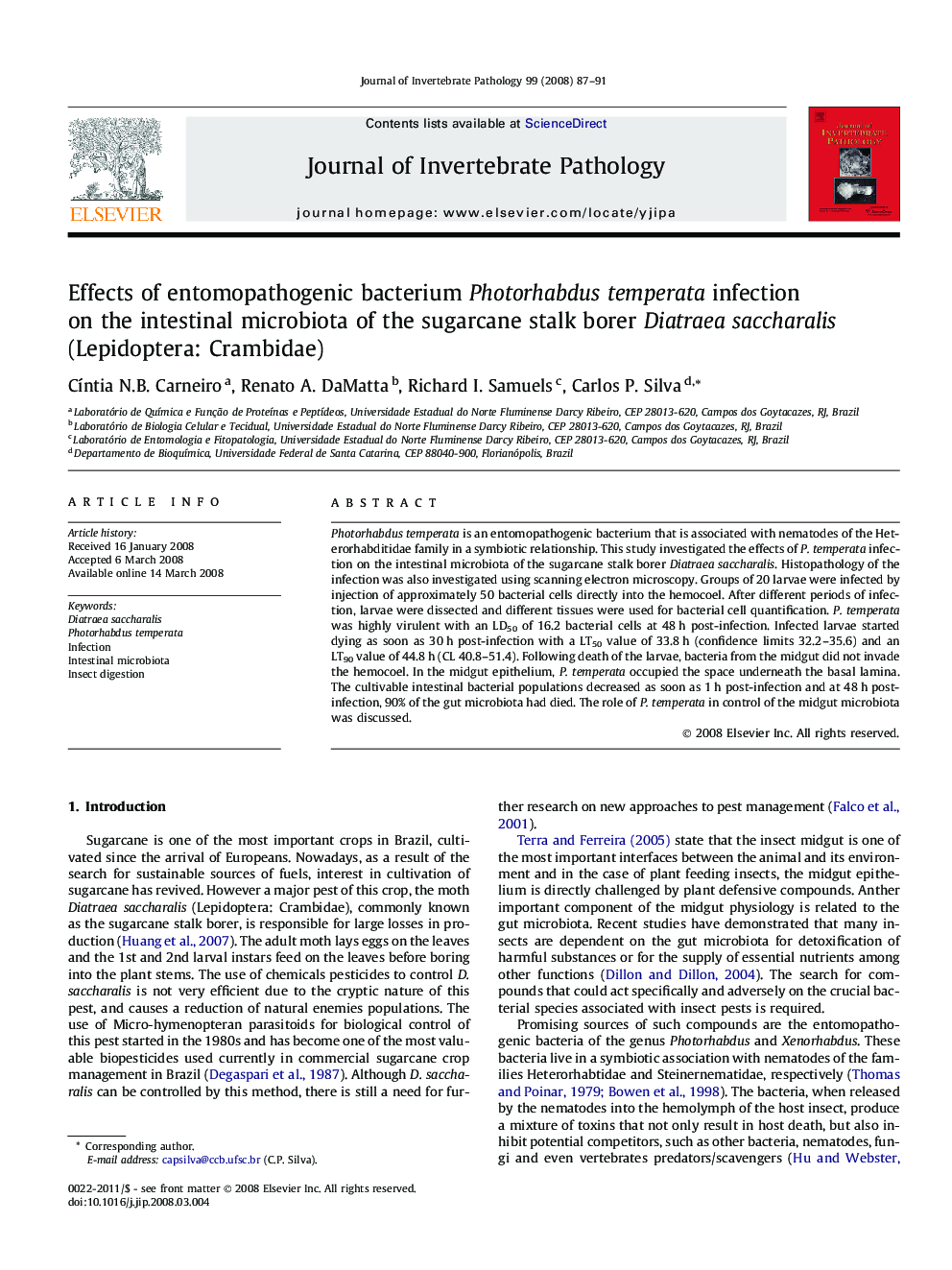| Article ID | Journal | Published Year | Pages | File Type |
|---|---|---|---|---|
| 4558417 | Journal of Invertebrate Pathology | 2008 | 5 Pages |
Photorhabdus temperata is an entomopathogenic bacterium that is associated with nematodes of the Heterorhabditidae family in a symbiotic relationship. This study investigated the effects of P. temperata infection on the intestinal microbiota of the sugarcane stalk borer Diatraea saccharalis. Histopathology of the infection was also investigated using scanning electron microscopy. Groups of 20 larvae were infected by injection of approximately 50 bacterial cells directly into the hemocoel. After different periods of infection, larvae were dissected and different tissues were used for bacterial cell quantification. P. temperata was highly virulent with an LD50 of 16.2 bacterial cells at 48 h post-infection. Infected larvae started dying as soon as 30 h post-infection with a LT50 value of 33.8 h (confidence limits 32.2–35.6) and an LT90 value of 44.8 h (CL 40.8–51.4). Following death of the larvae, bacteria from the midgut did not invade the hemocoel. In the midgut epithelium, P. temperata occupied the space underneath the basal lamina. The cultivable intestinal bacterial populations decreased as soon as 1 h post-infection and at 48 h post-infection, 90% of the gut microbiota had died. The role of P. temperata in control of the midgut microbiota was discussed.
